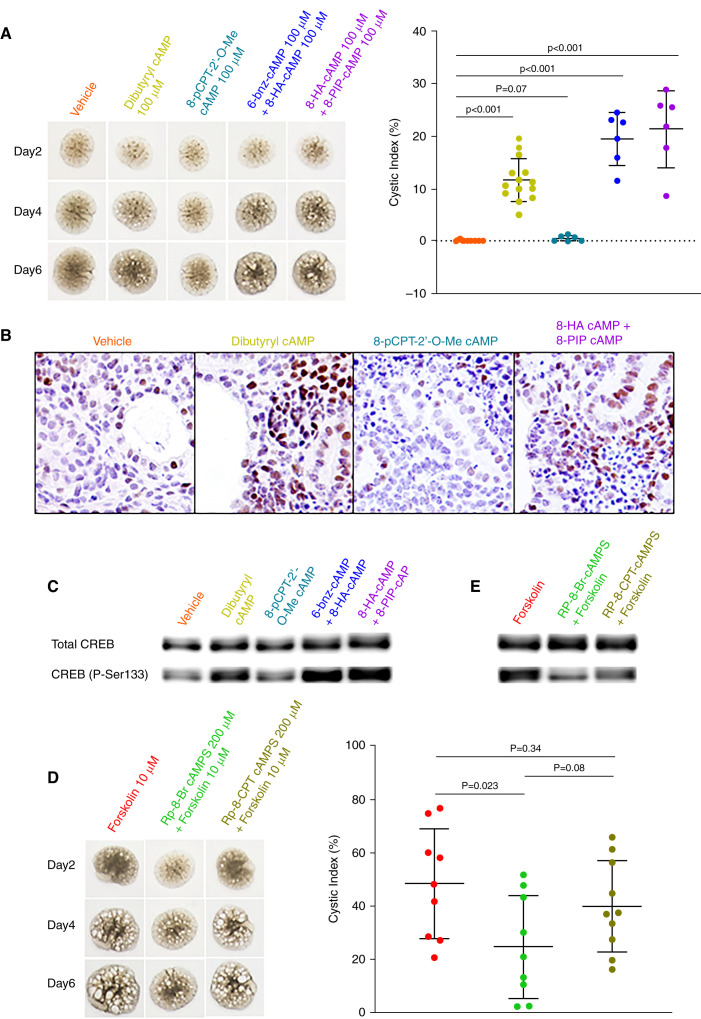Figure 1.
Treatment of E13.5 Pkd1RC/RC metanephric kidneys with cAMP analogs shows that PKA-I preferentially modulates ex vivo cystogenesis. Cultures were either left untreated (addition of vehicle only) or were treated with various cAMP analogs. (A–C) N6,2′-O-dibutyryladenosine-3′,5′-cAMP (dibutyryl cAMP, a cell permeant cAMP analog) and cAMP analog combinations that preferentially activate PKA-I, 6-Benz–cAMP or 8-PIP–cAMP (binding to CBD A of PKA RI) and 8-HA–cAMP (binding to CBD B of PKA RI), induced cyst formation and increased the expression of P-Ser133-CREB, whereas the Epac selective cAMP analog 8-pCPT-2’-O-Me–cAMP had no effect. (D–E) Rp-8-Br-cAMPS, a PKA inhibitor that preferentially blocks PKA-I, inhibited forskolin induced cystogenesis and expression of P-Ser133–CREB to a larger extent than Rp-8-CPT CAMPS, which is a better inhibitor of PKA-II compared with PKA-I. All kidneys are at the same scale.

